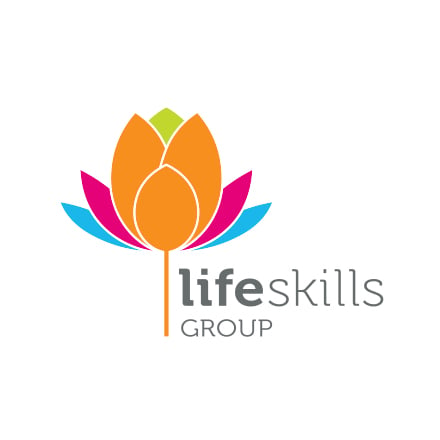Transitioning back to school can be a challenging time for both teachers and students, especially given the social and emotional impact of COVID-19 on our lives over the past year. To ease your students back to school, we have compiled a list of 10 ways you can focus on wellbeing in those first few days back at school - for both yourselves and your students, to promote a positive mindset and create happy, healthy attitudes towards the year of learning ahead.
1. Remember that your wellbeing is as important as your students’
Nurturing your own wellbeing optimises your ability to teach and support your students, and sets an example for them. Students can sense and be affected by a teacher's emotions, so maintaining a positive attitude will positively impact the students. We encourage teachers to participate in wellbeing activities (like those in our Back to School Wellbeing Activity Guide) with their students to model mindfulness and nurture positive relationships with their peers.
2. Empathise
Take a moment to think about all the various feelings and emotions students might have about coming back to school. Are they excited or anxious about starting school? Identifying concerns will make it easier to find strategies to address these concerns. Ask students questions like ‘What are you excited about?’ and ‘Did you miss school during the holidays? What did you miss?’ You can also encourage students to draw if they cannot express their feelings in words.
3. Check in
Ask your students to check in on their emotions. We suggest conducting a ‘weather report’. Students should close their eyes, meditate and contemplate about their current state for a minute. Then, students can verbalise how they are feeling through a weather report metaphor e.g. ‘I am feeling stormy today’. Check out our Back to School Wellbeing Guide for more information on the ‘weather report’ (and how the "Weather Report" feature works in our blended learning platform Life Skills GO).
4. Be present
Conduct mindfulness activities with your students to focus attention to the present moment. One mindfulness exercise involves closing your eyes and focusing your attention on your breath. This is a useful strategy to divert attention when having negative thoughts. Teachers should practice mindfulness activities with their students to model how to do these activities and encourage them to use these activities whenever they are feeling stressed or anxious. Check out our Mindfulness Gratitude activity here.
5. Build a positive relationship with your students
Create a positive and safe environment for your students. Let your students know that they can reach out to you whenever they need. Regularly checking in with your students can make them more comfortable with sharing their emotions with you. Normalise feelings of worry, anger or sadness. Spend time listening and show interest in their concerns.
6. Encourage positive relationships between your students
Encourage your students to build positive relationships with their peers. After a long break without seeing their friends or being allocated into a new class, students may be hesitant or have difficulty developing friendships. Peer relationships are crucial in transitioning students back to school as they provide social support whilst students are separated from their parents. Team-building games promote positive peer relationships through working together to complete a common goal. We have included instructions for Crab Soccer in our Back to School Wellbeing Guide to encourage the development of peer relationships - whilst having fun!
7. Make wellbeing activities routine
Establishing a clear routine or schedule of wellbeing activities at school can help students understand and normalise their emotional awareness. Talking students through the routine is especially important for reducing concerns in anxious students. Encourage parents to conduct wellbeing activities and mindful practices outside of school too, to reinforce language and consistency of a positive approach. Consider implementing a wellbeing program aligned to the Australian health and physical curriculum led by trained experts to support you and your students. Find more information here.
8. Check in with parents
Form relationships with students’ parents. Request parent contact information, send regular email updates and set regular meetings with parents. Building positive relationships with parents can ease their anxieties and help them keep track of their student’s progress, as well as reinforce them.
9. Set Time to Unwind
We know that the school day can create pent-up emotions and less-than-positive feelings for our teachers too, so it is important to set time out of the day, and at the end of the day to unwind. This time can be used for mindful practice, quiet time, refuelling, physical activities or - best of all - sleep! Of course - this goes for parents, and the little ones too!
10. Keep wellbeing front of mind throughout the year
Wellbeing should be a whole-school, strategic priority for schools. Student wellbeing is best supported by consistent social emotional and physical learning, and the evidence is clear that these strategies are most effective when implemented across the whole school; when the whole school community - staff, students and parents - reinforce learnings with a consistent language. If you want to learn more about whole-school wellbeing and best practices, sign up to be notified about our latest wellbeing webinars throughout the year to learn more!
______________________________________
Independently assessed and approved by the Be You Programs Directory, our platform can support your wellbeing goals by providing lessons aligned to the Australian Curriculum (ACARA), CASEL, and skills for 21st Century Learning (WEF). Life Skills GO provides comprehensive, effective and measurable methods of teaching social, emotional and physical literacy while supporting educator wellbeing.
Check out our Back to School offer on our online platform Life Skills GO, to help you kickstart your whole-school wellbeing strategy (valid only until 28 February for new users!)
.png?width=500&height=374&name=Logo_transparent%20(2).png)





